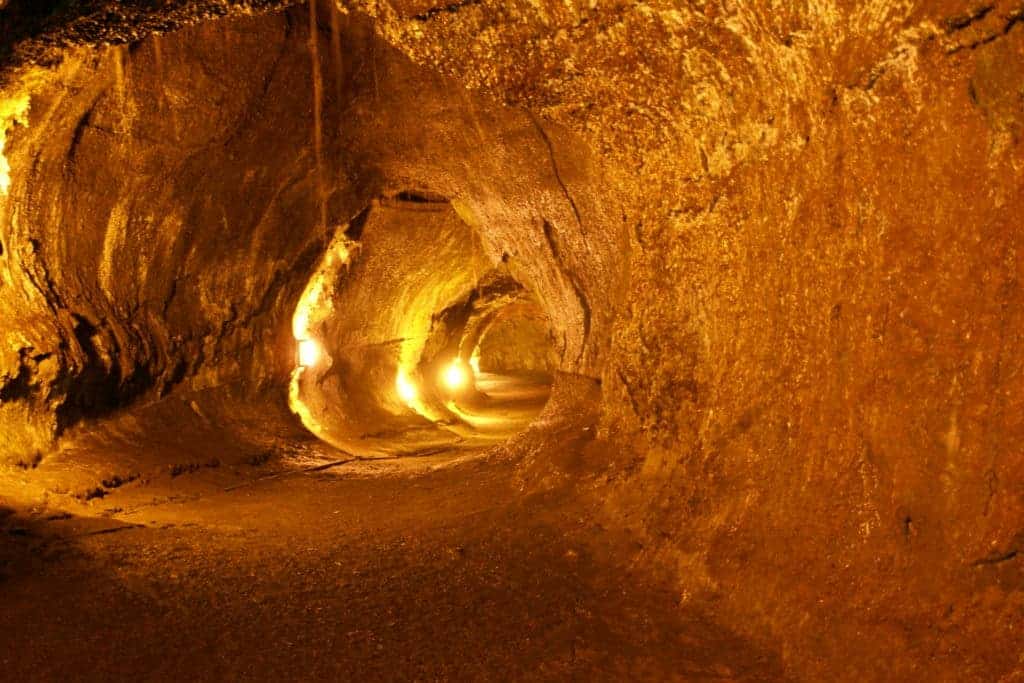In a new study published in Geophysical Research Letters, Japanese researchers describe what could be the site of a potential moonbase: inside a former lava tube.

All the manned missions that have ever reached the moon have been three days or less — and for good reason. The surface of the Moon is an extremely inhospitable place, with dramatic temperature changes, radiation, and meteorite impacts. If we want to establish a moonbase, we either have to build it, which would be extremely difficult, or we could take advantage of something that nature has already set up for us.
Lava tubes (or lava tunnels) are basically caves formed by flowing lava. Sometimes, lava flowing beneath the surface can solidify and form a hard crust which thickens and forms a roof above the still-flowing lava stream. After all the lava has drained or solidified, you’re left with a natural tunnel which can protect you from the hardships of the surface.
We know that the Moon has had rich volcanic activity as we can see the basaltic plains and astronauts even brought home volcanic rocks. Therefore, it’s very likely that lava tubes also exist. Furthermore, because the Moon has a much lower gravity than the Earth, these tunnels are likely much larger because they’re less inclined to collapse under their own weight. Understanding these features, researchers say, is important for a number of reasons.

“It’s important to know where and how big lunar lava tubes are if we’re ever going to construct a lunar base,” said Junichi Haruyama, a senior researcher at JAXA, Japan’s space agency. “But knowing these things is also important for basic science. We might get new types of rock samples, heat flow data and lunar quake observation data.”
The problem is — how do you find these tunnels? In order to pinpoint them, Haruyama and colleagues first worked with scientists from the GRAIL mission, a NASA effort which created a high-quality gravitational map of the Moon. The gravitational field isn’t uniform across the Moon (or the Earth); density variations beneath the surface lead to positive or negative variations. Since lava tunnels are basically voids beneath the surface, the researchers were looking for mass deficits, sometimes called negative anomalies.

This was only the first step. After researchers identified these potential areas of interest with GRAIL, they analyzed radar data from the SELENE spacecraft. Whenever you send out a radar wave and it encounters a solid feature (say the surface of the planet), some of its energy is bounced back, and some of it continues through. That continuing energy might encounter an underground geological feature, and bounce off of that too. The radar’s receiver can pick up on all these bounces and get a picture of what’s going on beneath the surface. SELENE wasn’t built to detect lava tubes, but if you can identify a ceiling and a floor with a void between the two, you’re good to go.
With this method, the team identified several promising areas around an area called Marius Hill. These lava tunnels, the study reads, could serve as “pristine environment to conduct scientific examination of the Moon’s composition and potentially serve as secure shelters for humans and instruments.” They’re also spacious enough to host even large cities, data shows.
“They knew about the skylight in the Marius Hills, but they didn’t have any idea how far that underground cavity might have gone,” said Jay Melosh, a GRAIL co-investigator and Distinguished Professor of Earth, Atmospheric and Planetary Sciences at Purdue University. “Our group at Purdue used the gravity data over that area to infer that the opening was part of a larger system. By using this complimentary technique of radar, they were able to figure out how deep and high the cavities are.”

Clearly, having the shelter of these tunnels could prove extremely valuable for future expeditions. No more radiation, no more unpredicted impacts, and a large area to establish a base and research sites. Of course, before we do that, we probably need to go and see it for ourselves, but the fact that scientists know these features exist and where to look for them is already a big plus.
Journal Reference: T. Kaku et al. Detection of intact lava tubes at Marius Hills on the Moon by SELENE (Kaguya) Lunar Radar Sounder.


